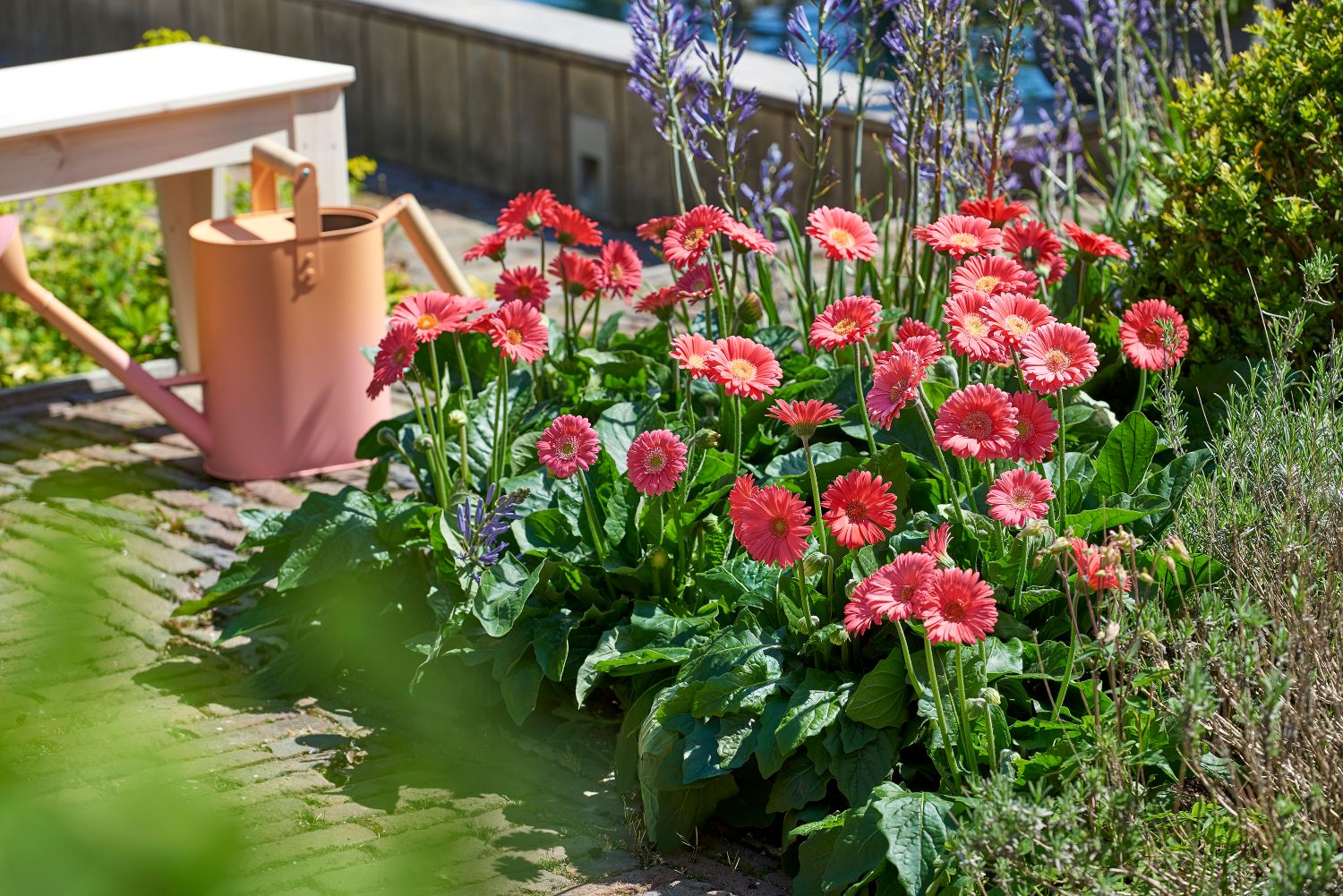
Garden trends for 2023
From sustainability to easy care
Garden trends come and go over the years. Every year brings fresh and innovative garden trends to transform your garden or patio into a true paradise. In this article, we will discuss garden trends for 2023 that catched our eye. Let’s have a look into several movements that are shaping the world of plant breeding.
Sustainable gardening
One of the most significant trends in gardening today is sustainability. Our society is increasingly looking for ways to reduce environmental impact and create gardens that are more self-sustaining. HilverdaFlorist is focussing on sustainable products to contribute to a flourishing, green future. This is done by optimizing the genetic resistance of plants.
Genetic resistance is a sustainable solution to deal with the increasing pressure of diseases and pests. HilverdaFlorist strives to develop robust plants that can withstand various circumstances and survive even longer with fewer resources. It is important to work more from a sustainability and resilience perspective.
Pollinator gardens
There is a growing concern about the disappearance of pollinators such as bees and butterflies. Gardeners are increasingly looking for ways to support these important creatures. Pollination gardens are becoming increasingly popular to encourage these little visitors into our gardens. Salvia, for example, is a true pollinator magnet.
HilverdaFlorist is proud breeder of the successful Salvia Salgoon® Series. As diversity is key, combine Salvias with other pollinator favorites like, Echinacea MOOODZ® and Garvinea® Garden Gerberas. Both series offer flowers with plenty of nectar and pollen, and a wide range of colours.
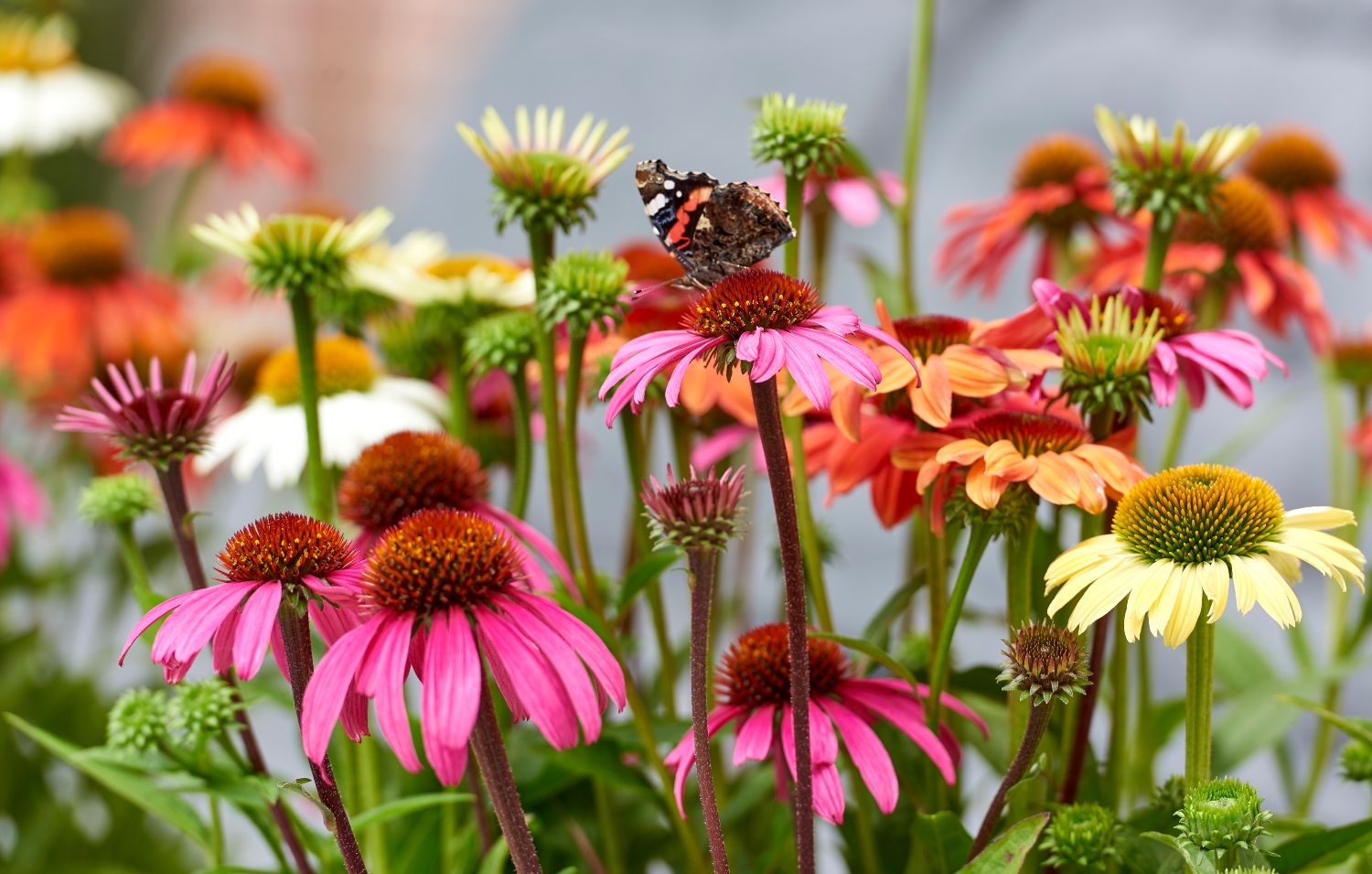
Container gardening
For people who live in apartments or have limited outdoor space, container gardening is the perfect way to enjoy plants! Container gardening can be used to grow a wide range of plants and is therefore suitable for the true creatives.
Our team of breeders created several series that are ideally suited for container gardening. Discover the bright coloured patio Alstroemeria Inticancha® Series, the diverse Dianthus Sunflor® Series or Patio Gerbera for the instant ‘WOW!’ effect.
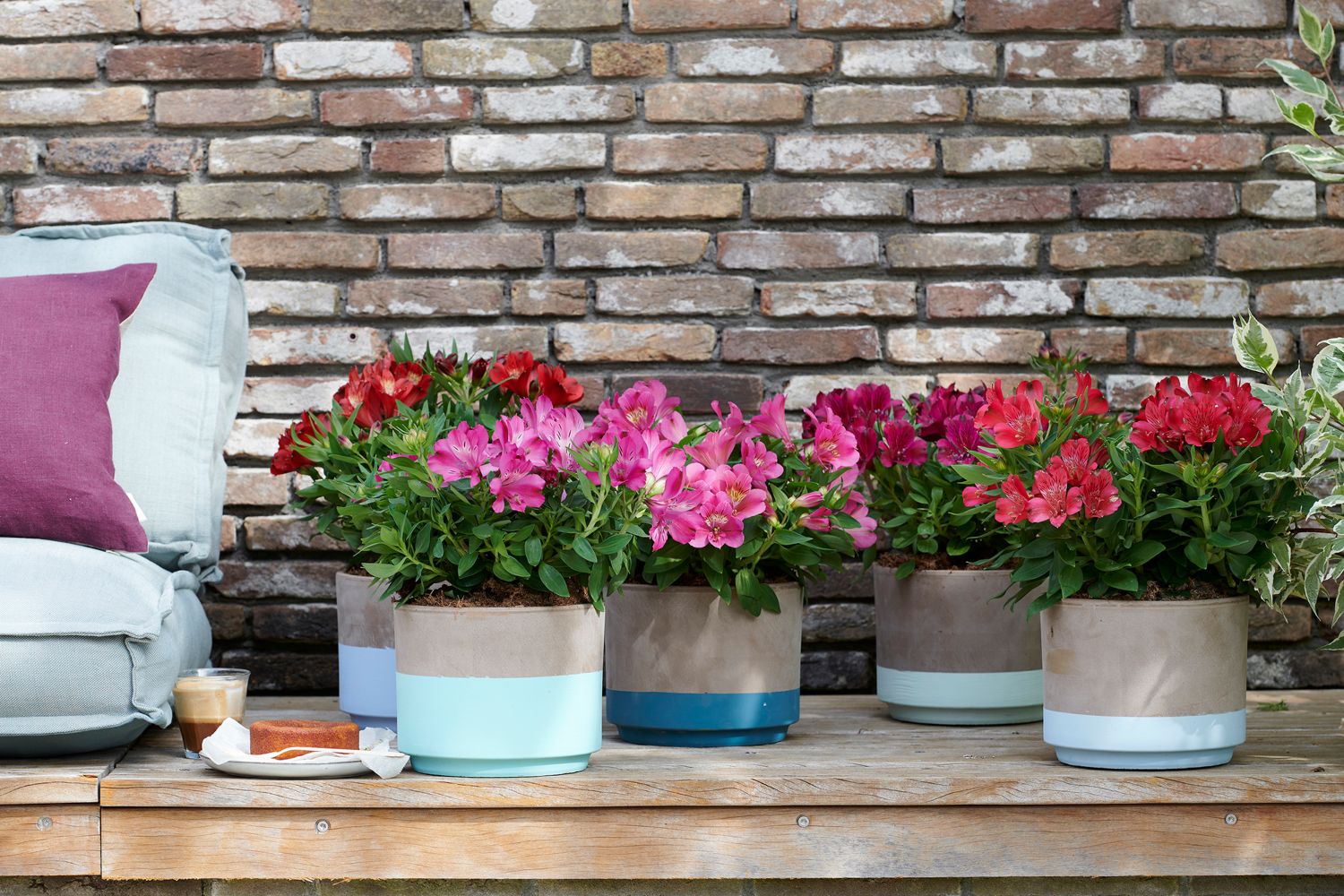
Low maintenance gardens
Since many people lead busy lives and don’t have the time or energy to devote to extensive gardening, there is a demand for plants that are easy to care and require minimal maintenance. To follow up on this demand, we make sure to develop resilient, drought-tolerant varieties that require minimal efforts.
Salvia Salgoon® plants are low maintenance and blend in effortlessly without too much fuss. Just make sure to use well-draining soil, let them enjoy a sunny spot and encourage reblooming by removing finished flower stems.
Besides Salvia, Gerbera Garvinea®, the only true garden gerbera, is a great solution. Caring for Garvinea® is simple; petst and diseases are insignificant. The plants require a spot in the sun or half shade and prefer a moist, humus-like garden soil. Give them some extra water when they are in a container, or in times of prolonged drought and a handful of organic fertilizer pellets during Spring.
Garvinea® Cheeky Series: cute garden gerberas with a compact crop and cheeky mini flowers.
Garvinea® Majestic Series: strong garden plants with elegant double flowers.
Garvinea® Sweet Series: robust garden plant that offers long-lasting large flowers.
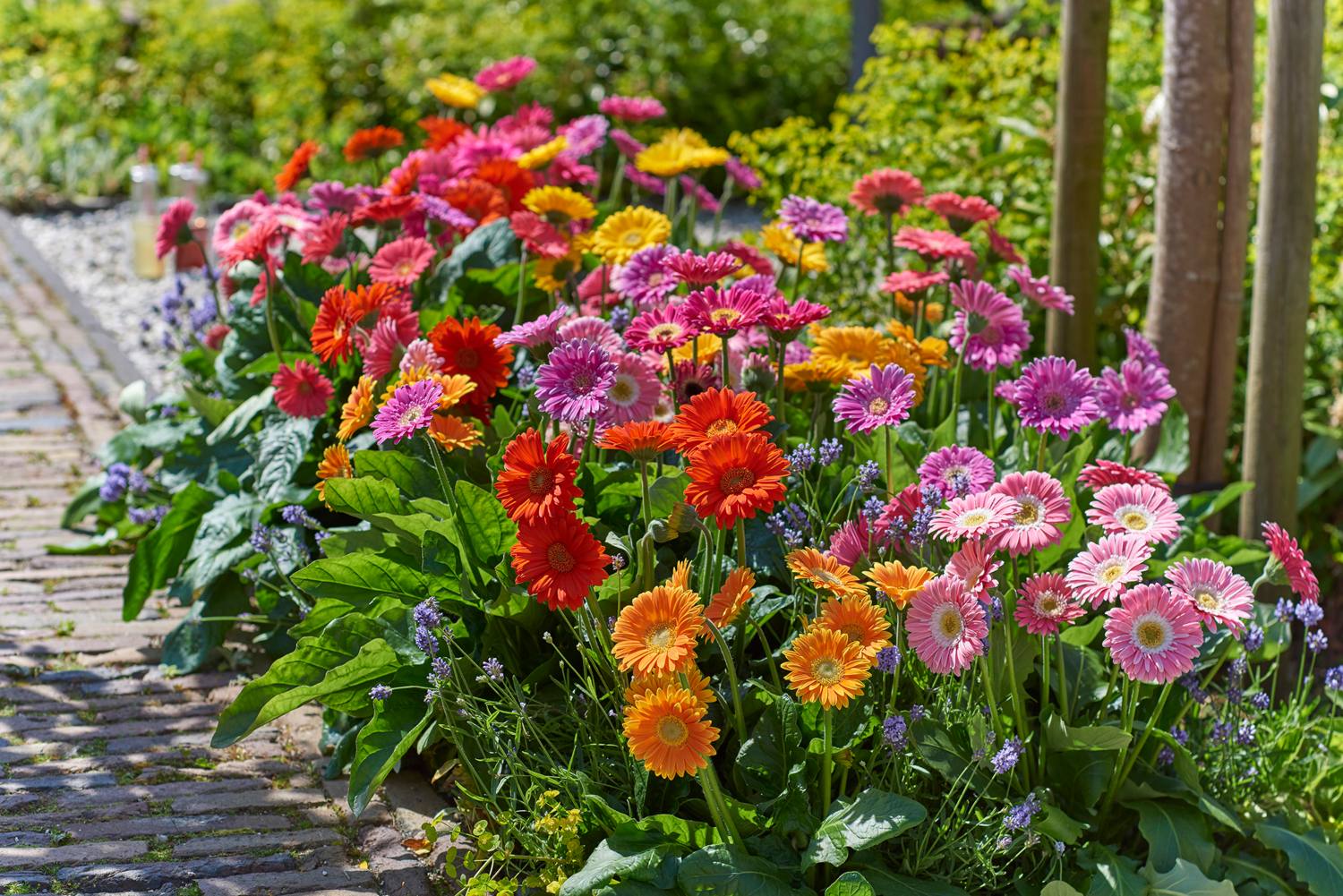
3 Seasons of beauty with Garvinea®!
During Spring and Summer it’s always fun to try something new in the garden.
Want to experiment with different colours or buy a plant you haven’t seen before? Be inspired by the one and only true garden Gerbera: Garvinea®. Garvineas are to be similar to the well-known cut flower Gerberas you will find at your florists. The big difference is that Garvinea® is a true garden plant, which you can put in soil or in a container. Outdoors it produces an enormous amount of flowers during three seasons of the year – from early Spring to the first frost.
From Gerbera to Garvinea®
Although Gerbera and Garvinea® are different in use and application, they have the same origin. The ancestors of the famous cut flower Gerbera are originally from Asia, South Africaand Tasmania. They mainly grow in areas with humid summers and dry winters. These colourful composites are also called ‘African daisies’. The first Gerbera was discovered in 1737, but it only started to raise interest at the end of the 19 th century in Europe when enthusiastic plant hunters discovered the species Gerbera jamesonii in South Africa. Since then they have become far removed from there ‘roots’, but are definitely here to stay! Gerbera and Dianthus are crops that have been part of the product range for decades.
This Gerbera, with orange-yellow flowers, is the mother of all cut flower and pot plant Gerberas. With the Rose and Tulip there are among the largest flower culture export products from the Netherlands. The Geberas are cultivated using sophisticated methods and are specially selected for their performance in a vase and because of this they are totally unsuitable for outdoor use in soil.
However, by re-discovering Gerberas which grow in nature, where exactly they grow in the wild and which properties botanic species have, we have managed to develop a new type of Gerbera that is indeed suitable for garden use. This hardy Gerbera was named Garvinea®. Garvinea® is a bred variety, that doesn’t occur in nature, but it does reunite the properties of several Gerbera species from all over the world.
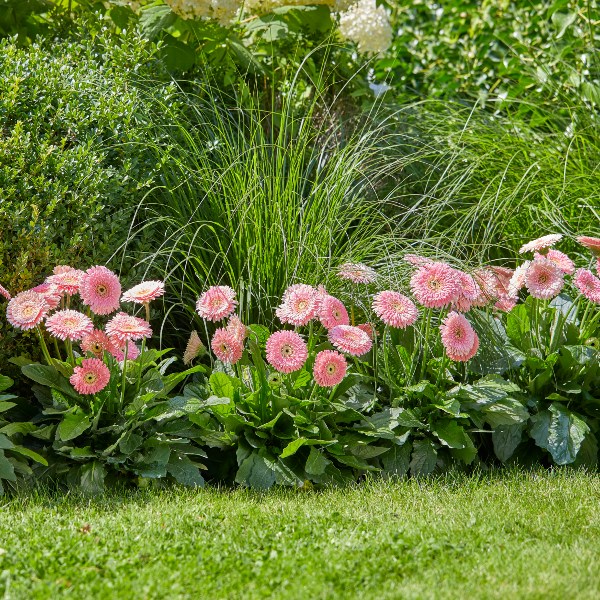
Garvinea® in your garden
By looking at Garvinea® you will instantly be reminded of the well-known Gerbera. The same flower shape, the same clear and vivid colours. Gerberas from the florist are normally cut flowers or non-hardy pot plants whereas Garvineas® prosper in outdoor conditions. When planted into the garden, they will soon grow a large crop, from with strong hairy stems emerge.
At first the bulky flower buds hang down, but when there are at the verge of opening, they raise their heads as their colourful petals unfold. Although the flowers of Garvinea® are smaller than those of the standard cut flower Gerbera, they are incredibly abundant. A plant sometimes even carries up to twenty flowers at a time.
In terms of flowering time Garvinea® out-performs its fellow-garden plants: new buds are formed from early spring until the onset of frost. As for combinations in the garden there are numerous possibilities. The horizontal flowers and large fresh crops go well with high, thin grasses. Because of their habit and long flowering time Garvinea® is also suitable as a border plant along the border fringes, or use them as accent colour in conjunction with low ground-covering plants. Or why not try them in solitary pots?
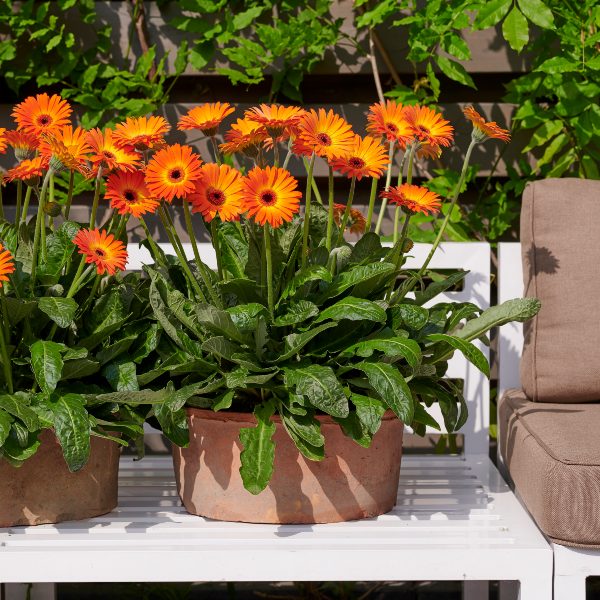
How to take care of your Garvinea® plants
Caring for Garvinea® is simple; petst and diseases are insignificant. The plants require a spot in the sun or half shade and prefer a moist, humus-like garden soil. Give them some extra water when they are in a container, or in times of prolonged drought and a handful of organic fertilizer pellets during Springtime.
Garvinea® Series
Since the introduction of the Garvinea® brand HilverdaFlorist introduced various product series with their own unique characteristics:
- Garvinea® Cheeky Series: cute garden gerberas with a compact crop and cheekymini flowers
- Garvinea® Majestic Series: strong garden plants with elegant double flowers
- Garvinea® Sweet Series: robust garden plant that offers long-lasting large flowers
Discover our series and find out which one suits your garden best!
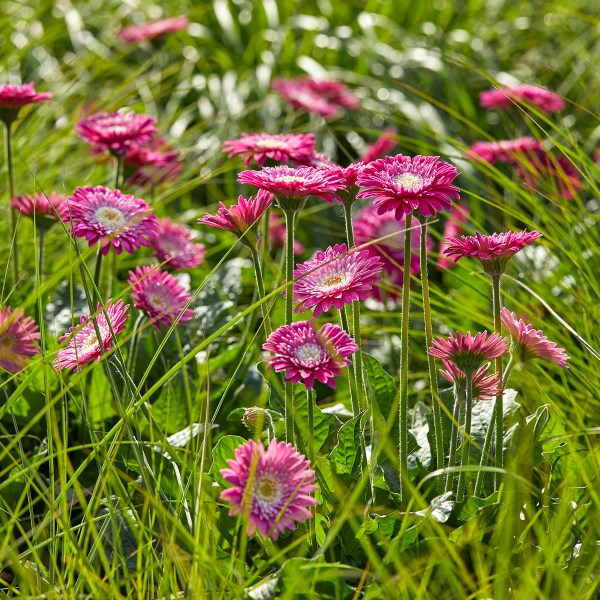

 Dwarsweg 15, De Kwakel
Dwarsweg 15, De Kwakel 
